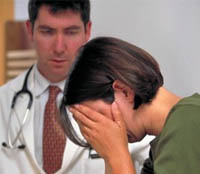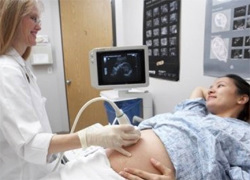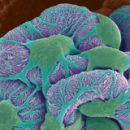Intrauterine sobbing or synechia is one of the possible reasons for infertility. They can develop as a result of abortion, operations in the uterus or banal inflammation. Read more about synefi in the article.
Content
Intrauterine syneficia (sobbing), or the so-called Asherman syndrome, consist in partial or complete infection of the uterine.
Causes of synechs and their classification
 There are several possible causes of intrauterine synechia: inflammation, injury and violation of hormonal balance. The main factor is the injury of the mucous membrane of the uterus after childbirth or abortion, and, subsequently, the development of inflammation. The emergence of intrauterine syneficia is very likely to have women with no longer developing with pregnancy. Intrauterine synechnias may also arise after operations in the uterus, in addition, this disease can also provoke intramatic contraceptive (spiral).
There are several possible causes of intrauterine synechia: inflammation, injury and violation of hormonal balance. The main factor is the injury of the mucous membrane of the uterus after childbirth or abortion, and, subsequently, the development of inflammation. The emergence of intrauterine syneficia is very likely to have women with no longer developing with pregnancy. Intrauterine synechnias may also arise after operations in the uterus, in addition, this disease can also provoke intramatic contraceptive (spiral).
Most convenient and often use the classification of intrauterine synechides in prevalence:
- I degree - less than 1/4 volume of the uterine cavity, slim spikes, pipe holes are free;
- II degree - involved from 1/4 to 3/4 volume of the uterus, there is no sticking of the walls, there are only spikes, pipe holes are partially closed;
- III degree - more than 3/4 volume of the uterine cavity are involved.
Depending on the degree of uterine iniquity, intrauterine synechnias are manifested by poor menstruation or their complete absence. The consequence becomes infertility or the inability to endure pregnancy, t.E., Permanent miscarriages. In the case of infecting the bottom of the uterine cavity, the outflow of menstrual blood can be disturbed, and, as a result, severe inflammation. If there is a synech in the uterine cavity, pregnancy is unlikely, even when conducting artificial fertilization.
Diagnosis and treatment of synech
For the diagnosis of intrauterine synechia, an X-ray image of the uterus is used after the introduction of a special contrast agent, ultrasound examination, inspection of the uterus from the inside using a special device (hysteroscopy).
Currently, the only method of treatment of intrauterine synechnia is their dissection under direct control of the hysteroscope without damaging healthy tissues to restore the normal menstrual cycle and the possibility of conception and having a child. The nature of the operation, its effectiveness and final results depend on the type of intrauterine synechia and the degree of uterine cavity.









